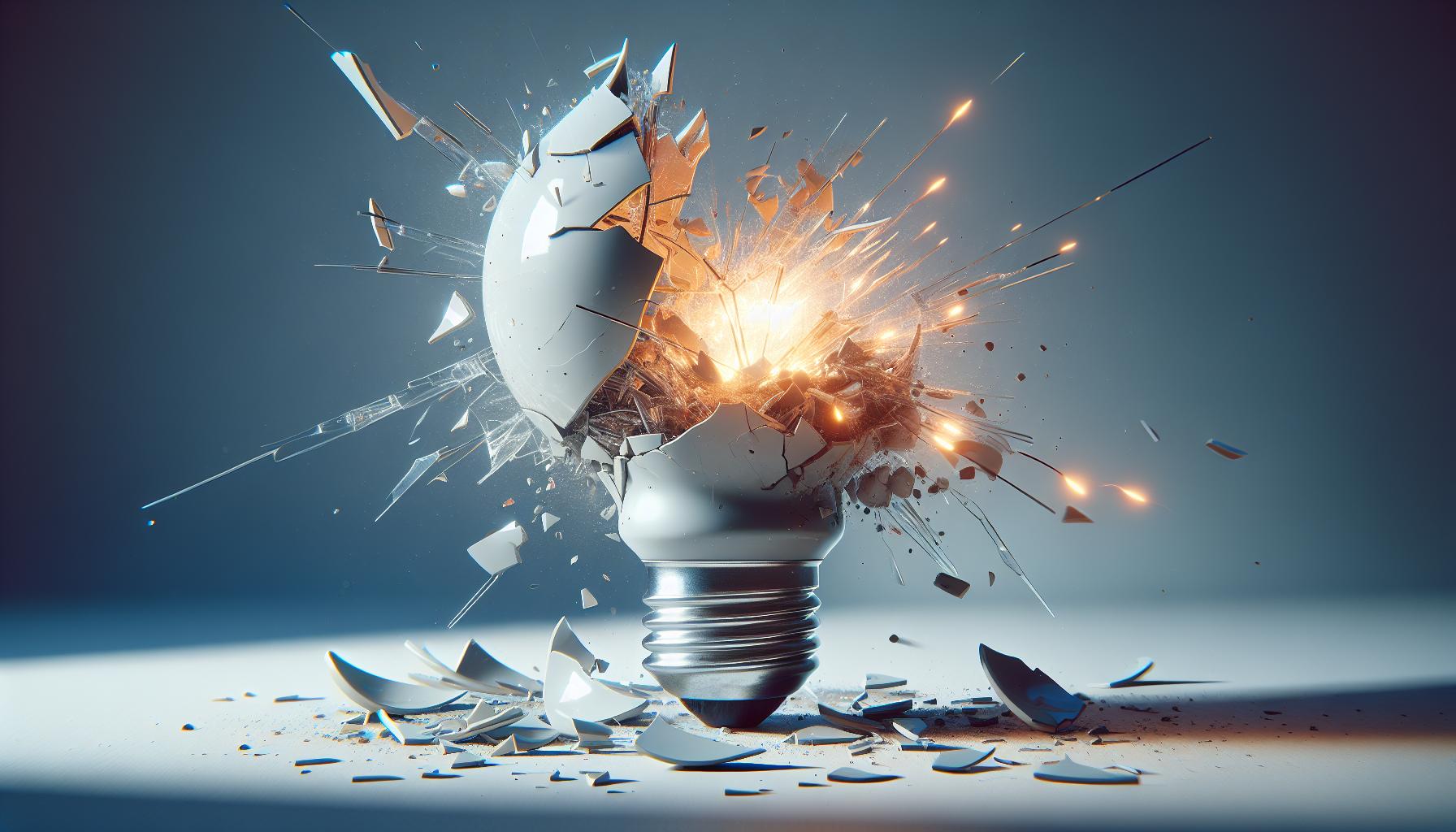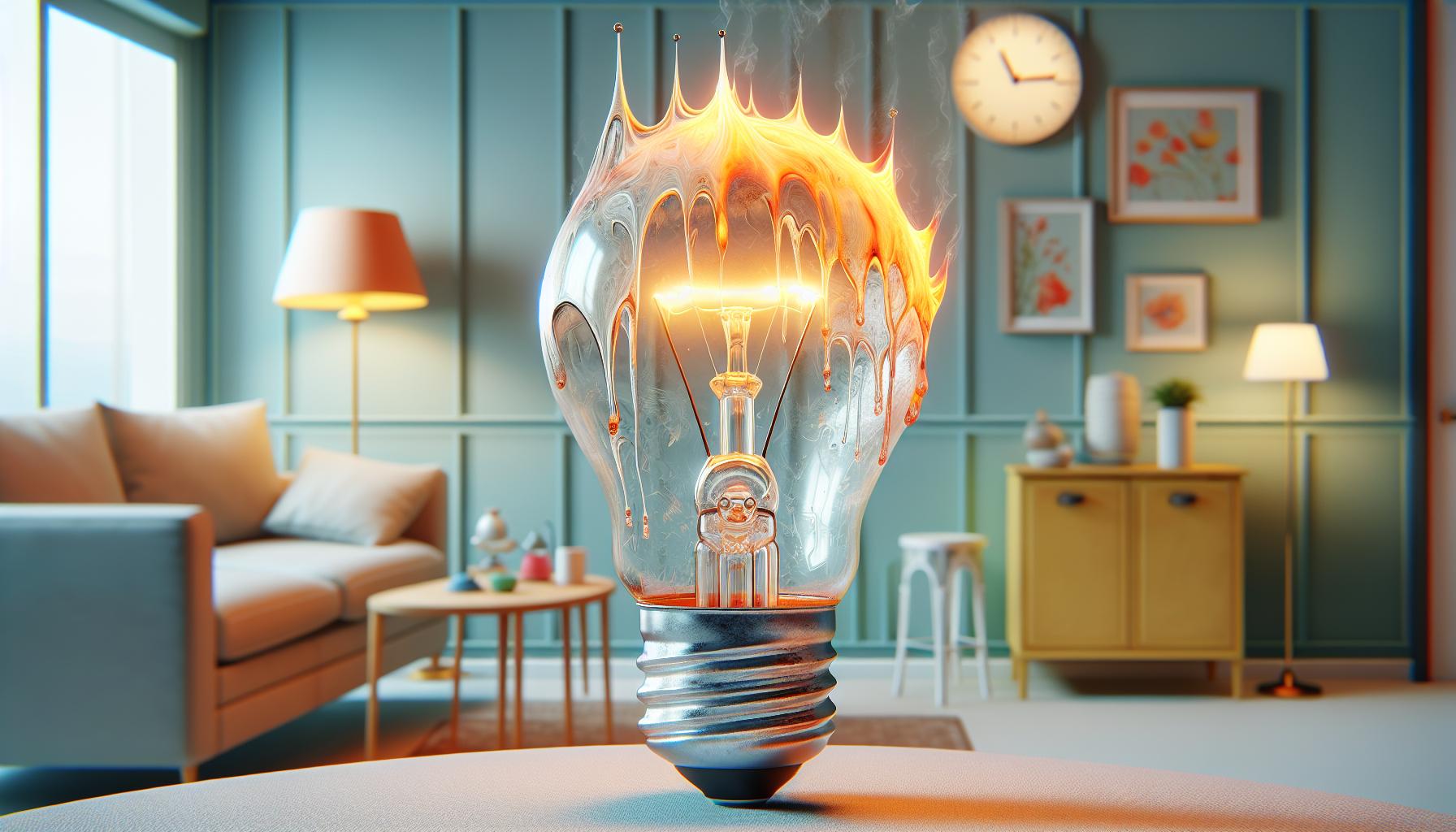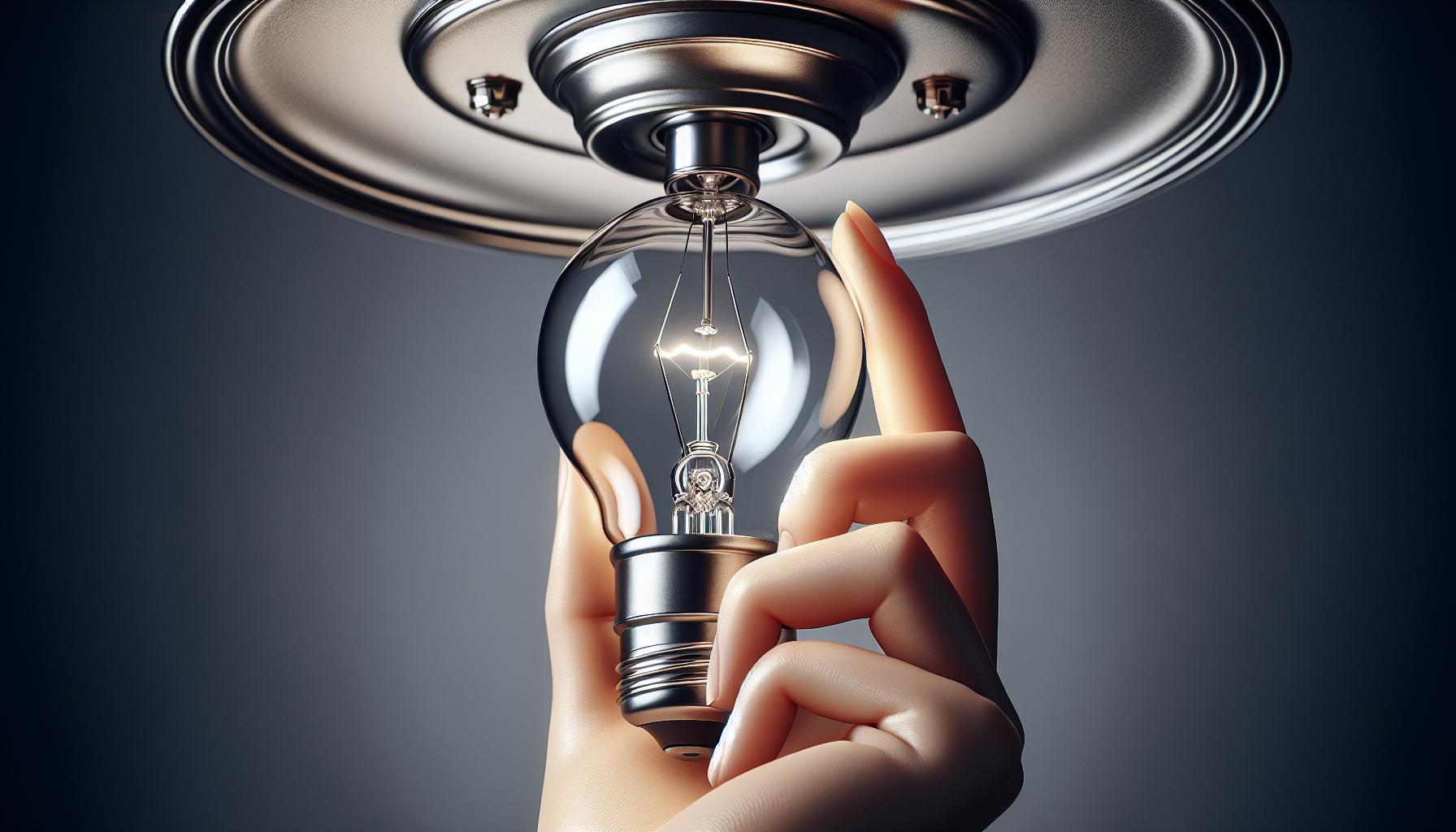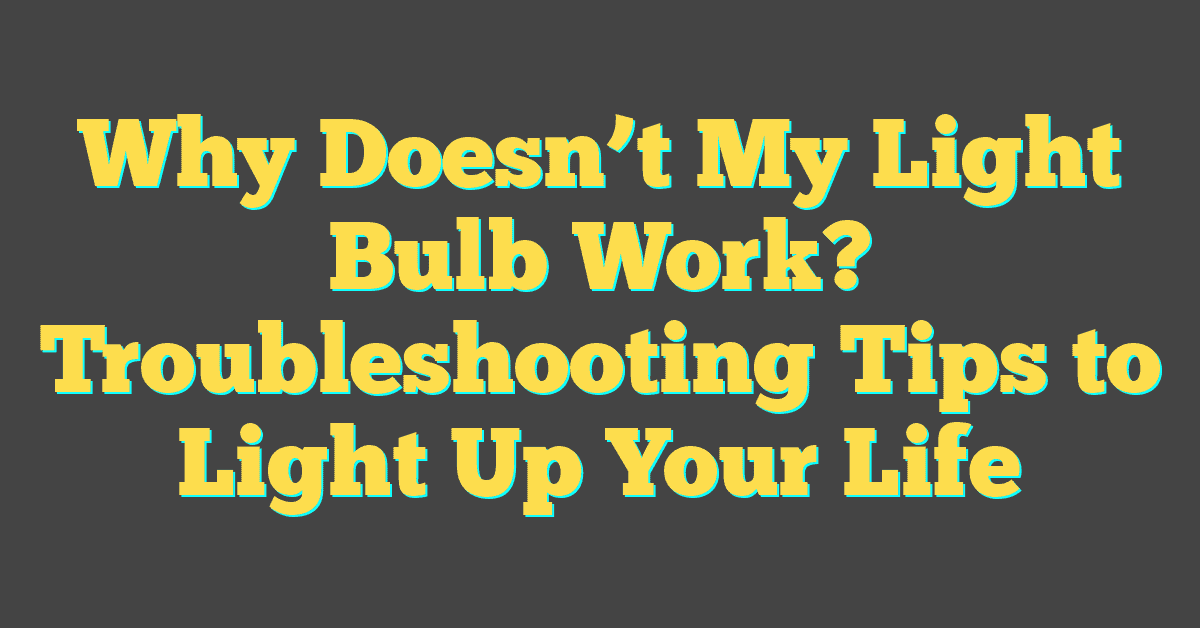Ever been startled by the sharp pop of a light bulb shattering? It’s not just surprising but can leave you wondering what just happened. Let’s shed some light on this shocking occurrence and find out why sometimes bulbs decide to go out with a bang.

Understanding the reasons behind a light bulb explosion can help you prevent it from happening in your home. From manufacturing defects to power surges, we’ll explore the common culprits that lead to these miniature glass fireworks.
So, if you’ve ever had to sweep up the remains of a bulb or ducked for cover from flying shards, stay tuned. You’re about to discover the ins and outs of this illuminating mystery.
Manufacturing Defects
When you’re delving into the world of light bulbs, you’ll find that manufacturing defects can play a significant role in the risk of explosions. Despite stringent quality checks, imperfections can sneak through. As a DIY enthusiast with a keen interest in lighting, you know how small flaws can lead to big problems.
In some cases, the composition of the glass itself might be compromised. This could mean there are inconsistencies in the thickness or the presence of microscopic cracks that aren’t visible to the naked eye. Stress points form at these weak spots, and when the bulb heats up, the stress can cause the glass to give way, resulting in a shattering bulb.
Here’s what you might typically find when it comes to defects in manufacturing processes:
- Faulty Filaments: A light bulb’s filament is its lifeline. If the filament is improperly mounted or has defects, it can lead to overheating which increases the pressure inside the bulb, sometimes causing it to explode.
- Poor Quality Base: The base of the light bulb might be poorly fitted, leading to an insecure connection with the socket. This can cause arcing – a spark or gap in the electrical contact, which then ignites the delicate components inside.
Another culprit could be the inert gas within the bulb. Light bulb manufacturers fill bulbs with gases like argon or nitrogen to prevent the filament from oxidizing too quickly. If the gas isn’t at the right pressure, it could react unpredictably when the bulb is in use, adding to the potential for an explosive outcome.
If you’re as passionate about lighting as the rest of us home project buffs, remember that sometimes these defects can be impossible to detect before installing a bulb. That’s why it’s always good practice to buy from reputable brands and retailers. They’ll often replace a bulb if it does go out with a bang, no questions asked. As you continue to light up your space, just keep an eye out for any signs of malfunction—such as flickering or unusual sounds—which might be your first hint that all is not well in the world of watts and lumens.
Power Surges

When you’re delving into the realm of light bulbs, power surges are like the unexpected thunderstorms in an otherwise calm sky—they’re intense, unpredictable, and can leave a trail of chaos in their wake. Think of a power surge as a massive spike in electrical current flowing through the circuits in your home. These spikes are far beyond what your light bulb is designed to handle, and if one hits, you might just find yourself in the dark with a shattered bulb to clean up.
Voltage Variation is at the heart of most power surges. Your trusty light bulb expects a consistent supply, but when that steadiness is disrupted, it’s like a shock to the system. A significant surge can cause the delicate filament to snap or the glass to fracture, turning a functioning bulb into a piece of modern art.
Here’s the kicker—home DIY enthusiasts often overlook the risk that even smaller, more frequent surges pose to their lighting. Over time, these can degrade the bulb’s integrity, setting the stage for an eventual shattering performance.
To protect your bulbs and keep your DIY lighting projects shining bright, consider these steps:
- Use Surge Protectors: They are your first line of defense, absorbing the excess current before it reaches your beloved bulbs.
- Install Voltage Regulators: For high-grade safety, regulators maintain a constant voltage supply, warding off those pesky fluctuations.
- Regular Inspections: Keep an eye on your electrical appliances and systems. If you notice frequent flickering or dimming, that’s your cue to investigate.
Remember, in the vast universe of lighting, even the best bulbs are vulnerable to the whims of electricity. Choosing the right protection is not just about safeguarding your lights—it’s about keeping your entire electrical system in check. Your light bulb doesn’t have to be a casualty of an electrical temper tantrum. With a little foresight and some smart home adjustments, you’ll keep your lighting projects illuminated and secure.
Overheating

« What Causes Light Bulbs to Burn Out Prematurely? Avoid These Mistakes
Do Mosquitoes Like Light Bulbs? Unveil the Surprising Truth and Outsmart Them »
Sometimes, what you’re dealing with is not a dramatic power surge but a silent adversary: overheating. It’s one of the main culprits behind those startling pops and cracks you hear when a bulb gives up the ghost.
What Causes Overheating?
Your light bulbs are like any other piece of home hardware – they have their limits. Overheating can occur due to a variety of reasons:
- Enclosed fixtures that lack proper ventilation
- Bulbs with higher wattage ratings than the fixture’s design
- Insufficient airflow around the bulb
- Dust and debris accumulation
Remember, each bulb you screw in is designed for a specific environment. If your bulb’s environment doesn’t meet these specs, you’re setting yourself up for a mini fireworks show.
Signs of Trouble
Keep your eyes peeled for telltale signs of overheating:
- Discoloration of the bulb or fixture
- Warping or melting of the bulb’s base or the fixture’s plastic parts
- Unusual flickering or dimming not related to dimmer settings
- A burnt smell emanating from the bulb or fixture
- Premature bulb failure that happens way before you’d expect
When you spot these symptoms, it’s time to take action. Check fixture and bulb compatibility, and ensure your lighting fixtures are clean and well-ventilated. The life you save might just be your bulb’s!
Combatting the Heat
Bulbs are not much different from us when it comes to a comfortable climate. Provide your bulbs with conditions they enjoy, and you’ll both be happier. Here’s how to keep things cool:
- Swap out bulbs for ones with appropriate wattage or transition to LEDs which run cooler
- Regularly dust your fixtures and bulbs to prevent build-up
- Check your fixture’s ventilation and consider upgrading to those with better air circulation
- Consider adding a dimmer switch as running lights at a lower power can reduce heat
Overall, it’s about giving your bulbs the right environment and the care they deserve. Keeping them cool helps ensure they remain shining stars in your home’s lighting universe. Remember, when it comes to managing overheating, staying vigilant makes all the difference. Keep an eye on your luminous friends and enjoy a brighter, safer home.
Physical Damage

Compromises to the structural integrity of your light bulb can play a significant role in the likelihood of it exploding. It’s a common scenario; bulbs can be damaged during installation or even while they’re on the shelf. Tiny fractures might be invisible to the naked eye, yet they’re ticking time bombs waiting for the right conditions to manifest into a shatter.
When you’re changing a bulb or moving fixtures around, be mindful of nicks and scratches. These small imperfections can cause stress within the glass when it’s heated, eventually leading to bigger cracks or even a dramatic shatter. While it might feel like a bulb has exploded spontaneously, the truth often lies in a prior event that weakened the bulb’s exterior.
Always handle bulbs with care. At the slightest drop or bump, the integrity of the glass could be compromised. Imagine yourself in a DIY project, where attentiveness to detail is key. Just as you’d gently lay tiles without chipping them, handle your light bulbs delicately to prevent undesired outcomes.
And it’s not just about the bulb itself. The objects around it matter too. If you’ve got a ceiling fan with a light fixture, the vibrations can gradually cause wear and tear on the bulb. Check for stability in all fittings and ensure there’s no undue movement that can precipitate damage.
Even the act of screwing in a bulb too tightly can cause stress. You want to secure it, sure, but avoid over-tightening—that’s just asking for pressure points to develop. Think of it as finding the sweet spot in a snug but not-too-tight fit, just as you might seek balance in a well-tuned guitar string.
Be vigilant about where your light bulbs are stored before they are used. Extreme temperatures, moisture, or even the slight jostle from other items in a busy closet can contribute to minute damage that later accelerates under operational heat. Safeguard your bulbs by storing them in a dry, temperate place where they won’t get knocked about.
Conclusion
So now you’ve got the lowdown on why light bulbs can go out with a bang. Remember to treat them gently and store them wisely. By avoiding physical damage and being mindful of where and how you’re screwing in your bulbs, you’ll reduce the risk of an unexpected light show. Stay safe and keep your bulbs intact for a brighter, shatter-free home.
Frequently Asked Questions
What causes light bulbs to shatter?
Light bulbs can shatter due to a variety of reasons such as manufacturing defects, overheating, power surges, and physical damage like tiny fractures or imperfections in the glass.
Can physical damage cause light bulbs to shatter when heated?
Yes, physical damage, including tiny fractures or imperfections, can compromise the bulb’s structural integrity, making it prone to shattering when it heats up during use.
How can handling affect light bulbs?
Improper handling, such as dropping or bumping light bulbs, can cause micro fractures that weaken the glass, increasing the risk of shattering.
Can household vibrations affect light bulbs?
Yes, vibrations from appliances such as ceiling fans or even the act of over-tightening can stress the bulb, potentially leading to damage and causing the bulb to shatter.
What is the best way to store light bulbs?
Light bulbs should be stored in a dry and temperate environment to protect against damage from extreme temperatures or jostling.




